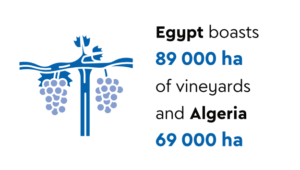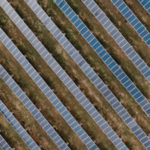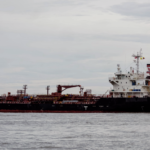Namibia, once known as South West Africa, has come a long way since its not-so-long-ago days of colonial oppression. After being claimed by Germany in 1884, the country found itself under South African control after World War I, by mandate of the League of Nations.
It was only in 1990 that Namibia finally gained independence from South Africa, and the South West Africa People’s Organisation (SWAPO) transitioned from being a liberation movement to the ruling party. And while Namibians will be heading to the polls in November’s general elections, SWAPO is expected to once again secure the majority vote. Presidential candidate and current Vice-President Netumbo Nandi-Ndaitwah is set take over the reigns from President Nangolo Mbumba, who has been at the helm since the death of President Hage Geingob in February this year.
Since independence, Namibia has worked to distinguish itself as a model of political and economic stability. According to the World Bank Group, Namibia’s recent economic performance has exceeded expectations, with the economy growing by 4.2% in 2023. This growth was primarily fuelled by the mining sector.
However, the Bank of Namibia expects the growth of the country’s mining sector and other primary industries to decelerate in 2024, before rising in 2025. ‘The subdued growth forecast for 2024 stems from a deceleration observed across various mining sub-sectors, compounded by ongoing downturn in crop farming activities,’ the bank states in its March 2024 Economic Outlook Update report. ‘The latest projections reflect downward revision of 3.0 percentage points on 2024 growth and an upward revision of 2.7 percentage points for 2025, from the December 2023 Economic Outlook update. The downward revision for 2024 growth was mainly on account of worsened drought conditions affecting the agriculture sector.’
Agriculture contributes 8.4% to the country’s economy and employs 22% of the workforce. However, about 70% of the population relies directly or indirectly on agriculture for their income and livelihoods. ‘The country’s arid climate and geographic conditions do not favour farming, and the crop variety is rather limited,’ according to Stanbic, a member of the Standard Bank Group. ‘Namibia is the driest country in sub-Saharan Africa and depends largely on groundwater – only 2% of Namibia’s land receives sufficient rainfall to grow crops. Of Namibia’s entire land area, 47% is allocated for agricultural activities, with 1% of this portion categorised as arable land’.
Namibia’s key crops include maize, millet and sorghum. As for its export-focused livestock sector, beef represents the largest portion of livestock exports. Namibian beef is recognised for its high quality, primarily due to the country’s stringent veterinary standards and natural grazing conditions. Additionally, fishing plays a significant role in this primary sector, comprising nearly 25% of all activities, thanks to the abundant fish resources in Namibian waters.
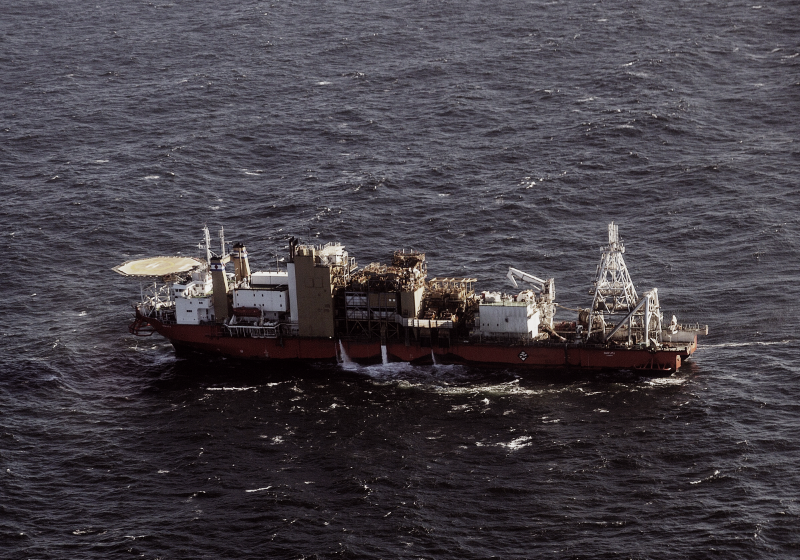
Namibia’s mining sector continues to be a crucial component of the country’s economy, playing a significant role in driving growth, attracting foreign investment and providing employment. Total direct employment in the sector industry stood at 18 189 last year – a 12.6% increase from 16 147 in 2022. And with its rich mineral resources, including diamonds, uranium, gold and base metals, Namibia is positioned as a key player in the global mining industry.
Revenue generated from the mining sector is also essential for government financing, allowing for investments in infrastructure, education and health services. And government’s push to enhance local content and promote value addition within the country is aimed at maximising the benefits of mining for Namibians. Namibia’s regulatory framework for mining is considered stable and investor-friendly, with clear guidelines that facilitate exploration and mining activities. The Ministry of Mines and Energy continues to work on policies that balance economic development with environmental conservation. This year has seen a notable emphasis placed on sustainable mining practices, including the rehabilitation of mined land and responsible water usage.
‘The mining industry remains the primary bedrock of the Namibian economy and is growing in its relevance and economic importance more so,’ according to Zebra Kasete, president of the Chamber of Mines of Namibia, in his foreword to the chamber’s 2023 Annual Review.
‘This was evidenced by the strong growth of the sector, which recorded 18.9% in 2023, and is increasing its relevance and GDP contribution to the Namibian economy from 11.9% in 2022 to 14.4% in 2023. He adds that the global shift towards renewables presents numerous opportunities for Namibia, ‘not only in the realm of green energy but also in terms of its mining potential’.
However, he says, while Namibia is endowed with critical minerals, research and development are needed to optimise processing techniques, particularly when it comes to rare earths.
‘I am excited to observe how emerging sectors such as green hydrogen and oil and gas will complement and benefit from a thriving mining industry, and will propel Namibia towards becoming an independent, resilient and self-sustaining economy.’
Historically, diamond mining has been the dominant sub-sector of Namibia’s mining industry. And while the country’s diamond production is less significant than neighbouring countries (Botswana, South Africa and Zimbabwe), Namibia is among the world’s first in value per unit. The main land-based diamond mining company is NamDeb, a JV equally owned by the Namibian government and De Beers. Debmarine Namibia, on the other hand, is De Beers’ offshore diamond mining company, also a 50:50 partnership with government.
According to De Beers, Namibia has the richest known marine diamond deposits in the world, estimated at more than 80 million carats. The country’s unique marine diamond mining operations, which involve extracting diamonds from the ocean floor, have garnered attention for their innovation and sustainability practices.
Uranium mining is another significant segment for the Southern African nation. As the world’s third-largest producer of uranium, Namibia contributes 11% of the global supply – behind Kazakhstan (43%) and Canada (15%).
The country is home to major mines such as Rossing and Husab, which are crucial for meeting that global uranium demand, particularly as countries pivot towards nuclear energy as a low-carbon alternative. Uranium is, after all, a vital component for the production of nuclear fuel, and is used in nuclear power reactors all over the world. The renewed interest in uranium mining has also been fuelled by rising energy prices and the global push for cleaner energy sources.
Gold mining, while smaller in scale compared to diamonds and uranium, is also seeing increasing interest from both local and international investors. The ongoing exploration and development of new gold projects are expected to contribute positively to the sector, alongside initiatives aimed at improving extraction technologies and practices.
Namibia’s export landscape is diverse, with diamonds leading the charge at 25% of total exports, and accounting for close to 70% of its mining exports. Other significant exports include uranium, various metals such as lead and zinc, as well as food and live animals. The country has a strong trade network, particularly with Botswana, as well as South Africa, which accounts for 27% of its exports. According to the UN COMTRADE database, 2023 saw US$1.06 billion in exports to Botswana and US$1.02 billion to South Africa, followed by China, with US$684.18 million in exports.
Namibia’s business environment is largely positive. The country has introduced several policies to encourage foreign direct investment (FDI). According to UNCTAD’s World Investment Report 2023, the Namibian sectors that drew the most FDI include agriculture, mining, tourism and infrastructure development.
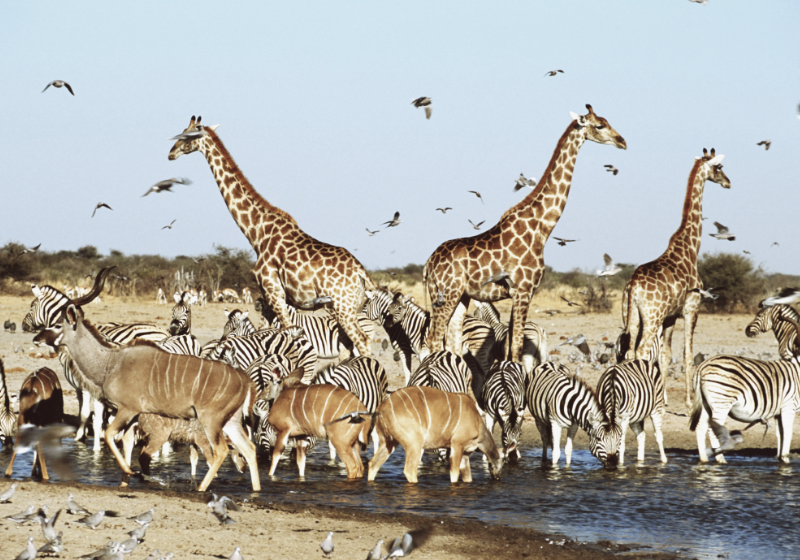
In 2022, FDI flows to Namibia reached US$945 million, up from some US$697 million the previous year. And by the end of that period, the total FDI stock amounted to US$7.8 billion, accounting for approximately 63.6% of Namibia’s GDP.
Among the policies that have attracted FDI are the Investment Promotion and Protection Act (IPPA), which establishes a legal framework to safeguard the rights of foreign investors. Additionally, the One-Stop-Shop Investment Centre offers a streamlined process for obtaining permits, licences and regulatory approvals. The government also provides tax incentives, such as reduced corporate income tax rates for new investments in priority sectors such as agriculture, manufacturing and tourism.
Namibia’s services sector, meanwhile, contributes 54.2% to GDP and employs 62% of the workforce. Key sub-sectors include financial services, public administration, retail and wholesale trade, transport and communication, and tourism.
Namibia’s varied landscapes and rich wildlife present valuable tourism assets, making the sector an important source of income, with a direct contribution to GDP of around 10%. Last year, Namibia saw approximately 864 000 inbound tourists – a clear indication that its tourism sector is well on track towards returning to pre-COVID levels. Around 424 000 of those tourists were holidaymakers, 37.9% of whom came from neighbour South Africa and 7.9% from Angola.
‘International tourist arrivals increased by 87.4 percent – from 461 027 in 2022. This notable increase demonstrates that Namibia is a favourable tourist destination for visitors,’ says Pohamba Shifeta, Namibia’s Minister of Environment, Forestry and Tourism.
Namibia’s telecoms sector is another important contributor to not only GDP but the nation’s development too.
As of early 2023, Namibia had 1.37 million internet users, with an internet penetration rate of 53%.
‘The telecoms sector holds tremendous potential for growth and innovation, and with a focus on infrastructure sharing, national roaming and number portability, the industry could achieve even greater expansion,’ says Andrew Hall, MD of Paratus Namibia, which is part of the Paratus Group.
Hall, however, cites restrictive regulations, legislative red tape and administrative delays as the main obstacles faced by the sector. And these restrictions, he says, slow down critical infrastructure projects and limit the potential for industry-wide collaboration that could accelerate progress.
That said, ‘with Namibia approaching elections, there is a growing sense of optimism, especially as we see progressive shifts taking place across other SADC countries. We have an exciting opportunity for the country to consider evolving its frameworks and enable the sector to reach its full potential for the benefit of all Namibians,’ adds Hall.
‘Connectivity, excellent digital infrastructure and service will be the key to unlocking the continent’s massive potential,’ says Paratus Group CEO Schalk Erasmus.
In August 2022, Paratus Namibia unveiled its new carrier-neutral, ISO-certified, Tier 3 by-design data centre in Windhoek – the first of its kind in Namibia, and which provides secure colocation for other operators. Paratus also offers an open-access fibre network for market-wide infrastructure access.
‘Paratus is also the landing partner – and built the cable landing station at Swakopmund in Namibia – for Equiano, Google’s undersea cable in Namibia,’ says Erasmus. ‘This adds enormous broadband capacity, delivers a more robust internet backbone to the country and can open enormous economic opportunities for the entire SADC region.’
Those opportunities apply as much to Namibia’s telecoms segment as it does to the country’s mining, agriculture and tourism sectors. Each plays a crucial role in Namibia’s continued growth and prosperity, as the nation reinforces its commitment to economic stability, while positioning itself as a prime destination for investment as well as sustainable development in Southern Africa.
Images: Unsplash, Gallo/Getty Images






